Indian Food: A Multicultural Enterprise
Indian culture is a multifaceted enterprise that collectively represents thousands of distinct and unique practices of the religions and communities present in the country. Often identified as an amalgamation of several cultures, Indian culture is preceded by a rich course of history that spans several millenia. 1 2 Traveling from one city to another, one experiences wide variations in customs concerning language, religion, daily life, music, architecture, etc.
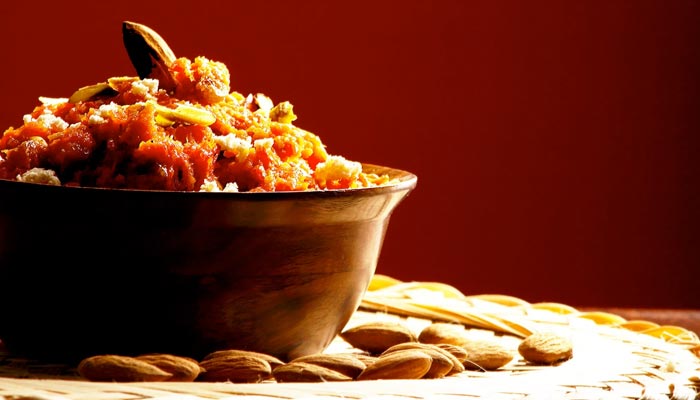
The diversity of India has given birth to various perceptions of the country and its people. These differing perceptions result in a complex, interconnected yet conflicting picture of the culture of India. Due to its inherent multifaceted nature, the discussion of Indian identity or what can be defined as “Indianness” remains a topic of great complexity. However, despite these difficulties, the universal hierarchies of Indian culture can be understood quite easily through the lens of Indian food.
Food in India
The cultural landscape of India is littered with food from the ancient Vedic ages to the modern-day globalization period. The concept of food is deeply ingrained within the culture’s religions, rituals of life, and even social and communal behavior. 3
Food in India is more than just a substance consumed for nutritional support of the human body. In fact, food is described as a two-dimensional entity that provides the human body with the necessary nutritional value to remain alive and as a cultural principle of cosmological creation. Dr. R.S. Khare, a pioneer in the study of food in India, has described food in terms of four central cycles that can be used to synthesize various cultural conceptions in India. 4
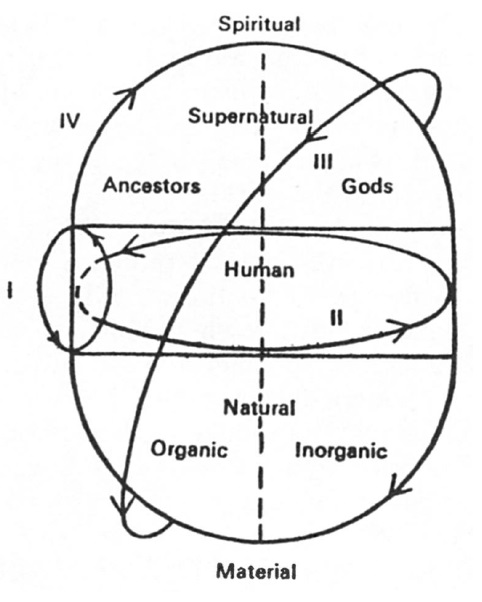
These four cycles include within their scope everything from the reality created by the religious pantheon of Indian gods, to the creative principles of organic and inorganic matter and their relational experiences. These four major modes of food circulation, where the larger mode subsumes the smaller, can be described as (i) Minimal: the individual cycle, (ii) Primary: the Socio-ritual cycle, (iii) Secondary: the Cosmic cycle, and (iv) Maximal: the Primordial cycle.
None of these cycles are completely independent of the other and all are intertwined in cultural practice, thought, and attitude. Most importantly, these four cycles are designed in a manner such that food and the rituals of food are inextricably linked with a spiritual quest of liberation and enlightenment. In this manner, food in Indian culture demarcates both an individual’s cultural, social, and spiritual boundaries and aspirations. 5 6
A socio-cultural anthropologist and a professor of Anthropology at the University of Virginia, Khare’s work is distinct in its study of India’s changing society, religions, food systems, and political cultures. A central figure in the study of gastroeconomics, as Khare puts it, his works have followed the trajectories of contemporary and modern cultural discourses on Indian culture, and its rich history. Using food as a window to explore Indian culture and history, Khare’s anthropology has helped integrate and connect the bridges between India-West cultural, religious-philosophical, and literary distinctions and differences. In exploring these four food cycles, Khare helps us relate and characterize, through food, the various constructs that characterize the depth of Indian culture.
Food in Indian Religion
Food has often been used as a medium to illustrate the deep-seated Hindu caste system that persists to this day in India. Within this system, the upper caste are not to eat or share food with the lower caste as it is considered this may “pollute” them. The practice still prevails in many parts of India either implicitly or explicitly.
Caste also defines what to eat and what not to eat. Hindu scriptures, or shastras, prescribe non-vegetarian food for the warrior or Kshatriya class, and vegetarianism for the scholarly Brahmin class. Food, in this manner, is partitioned between the two classes with the Kshatriyas having a non-vegetarian diet as they are required to physically drain themselves in the battlefield while Brahmins acquire a vegetarian diet as their duties require them to perform tranquil ritualistic tasks.
You are what you eat, and proper food was said to create not only a good body (medicine) but also a good mind (yoga). Thus, what one eats reflects one’s personality and identity, and also determines the person they will become. With regards to the caste system, food is symbolic of stimulating different energies and temperaments.
Food is also integral to all religious celebrations and ceremonies, such as the custom of having biryani on Eid al-Fitr or the making of fresh rice during the harvest festival known as Pongal.
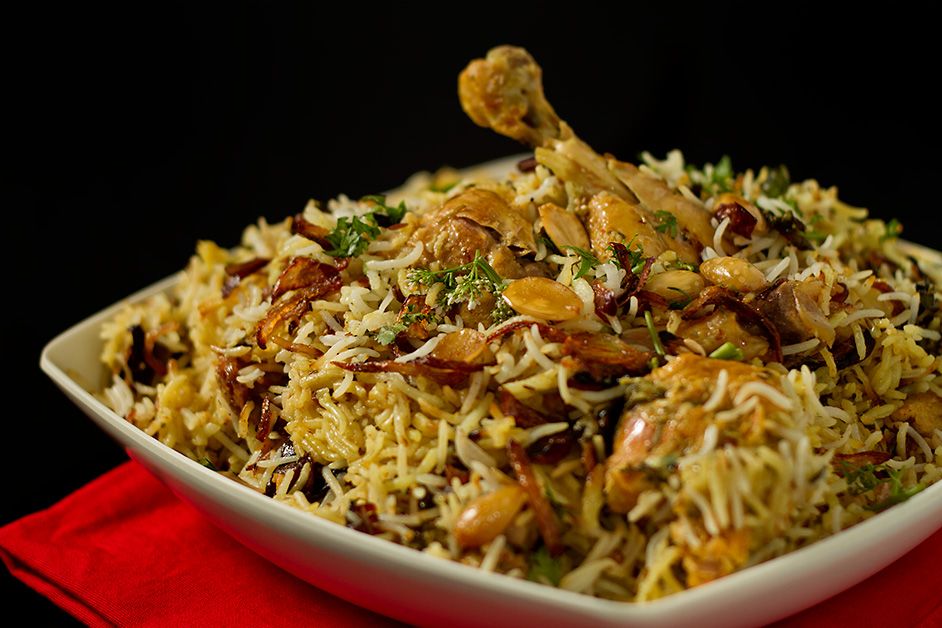
Practices such as langars held at Gurudwaras, a place of worship for the Sikh community, promote egalitarianism where people irrespective of their caste, class, gender, and religion etc. are served food and eat together.
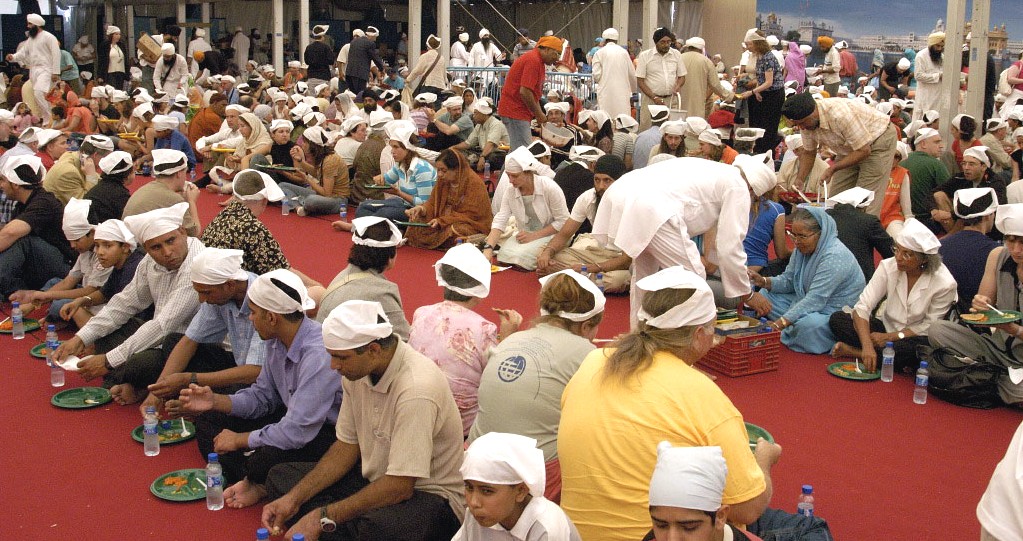
On such occasions, anyone can volunteer in preparing and serving the food and the food that is served is usually one that is acceptable by all religions. At first glance, while it may seem that food practices within the caste system may result in divisions within the populace, among the greater sphere of religious faith food also serves as a medium that unites all. 7 The langars held by the Sikh communities of India are one among many other similar practices in other ethnic communities in the Indian subcontinent. Through their use of food, these practices become a direct representation of the diverse mediums of faith within the nation.
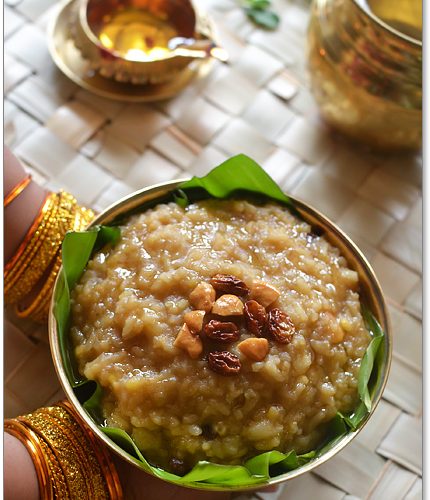
Food in Social and Communal Practices
Food claims a big role in the social and communal practices of India. At an individual level, food is integral to one’s identity. One grows up eating the food of their ethnicity, and it becomes an integral cog among the values that are held special and of personal value for said individual.
Traditional food practices are also passed down from one generation to the next and becomes an operation of cultural identity that follows the individual wherever they may travel. While this has led to cases of cultural appropriation, it also evokes one’s social responsibility to express their culture without shame as well as to integrate that of others into their own. This is quite common in India where families often share and learn from each other’s culinary practices further adding to the diversity of their own lineage. 8
Food also serves as a symbol of social acceptance. The practice of offering sweets and drinks to a guest is important in helping a guest feel at home. A guest’s recognition of the offering is observed as positive reinforcement and an indication of acceptance. Similar interactions are witnessed in the case of settling disputes in village communities as well as engagement and wedding rituals where food becomes a medium of exchange.
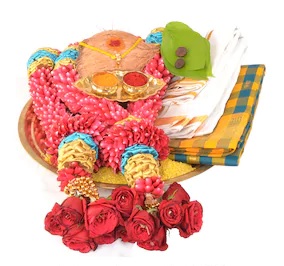
Food in Geography
Indian food is almost a misnomer as it has traces of influence from various cuisines from Persia, Middle East, Central, and Southeast Asia. No single dish can thus represent the full spectrum of India’s culinary culture. The optimal means to understanding this aspect of the discussion is to take a dip into the diverse regional cuisines of India. The varying food traditions from one state to another represent centuries worth of history in invasion, conquest, religious change, political evolution, and social customs hosted by India.
The varied palette of ingredients are distinguished by their conventions. Different regions of India place their unique identities onto the Indian culinary palette. Southern India excels in the use of rice and lentil recipes involving rice crepes or dosas, rice and lentil cakes served with chutney or sambar, a piquant sauce. Meanwhile, Northern India is largely known for its flat breads like roti’s and paratha’s that are accompanied by a fondness for dairy and tandoori (clay-oven baked) sauces and dishes.
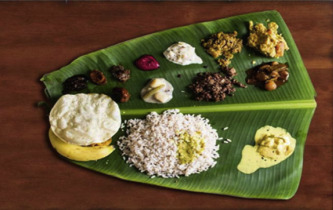
Beyond these broad and general descriptions, the diversity in regional foods and cuisines is emblematic of the multifaceted nature of Indian cultural traditions. With the proliferation of modern technology, it is now very easy to gather resources and learn to cook the traditional cuisines at one’s home and get a greater appreciation and taste of Indian culture and practices. 9
Food as a Ritual of Life
Finally, food is representative of the rituals of life within Indian culture. In this sphere of influence, we combine the four food cycles in a composite structure that may define an individual’s way of life, spiritual practices and beliefs, and personal growth.
In such a realm, food extends beyond the borders and restrictions of its subsidiaries in religion, ethnicity, language, etc. A direct example of this statement is seen in the practice of folk tales where food is used as a metaphor for moral lessons expressed in the form of riddles. 10 The celebrations of popular harvest festivals further reinforce these lessons through the medium of ethnic practices. Temple visitations also encourage the donation and sharing of temple food as a means toward spiritually connecting with the gods and for promoting ones’ spiritual growth.
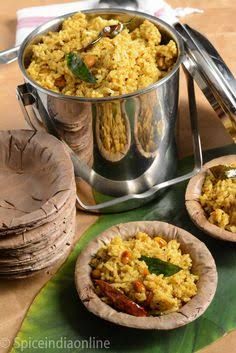
Even simple actions such as the offering of food to crows before a major meal for the day signify a deeper religious meaning in connecting with loved ones who have passed away or ancestors, whom the Hindus believe arrive in the form of crows. 11 12
Food in India serves both as a commodity and as an expression of cultural constructs. It is a coded language that provides various articulations and reflective thoughts upon the establishments of the diverse cultural practices and identities of the Indian subcontinent. One cannot deny the dialectical relationship of food within the customs, rituals, faith, beliefs, values, literature etc. of Indian culture. Over the years, globalization, international collaboration, and intercultural communication via social media have allowed for the popularization of Indian food around the world. Nevertheless, there is much left to appreciate regarding the deeper intricacies and relationship of Indian food which remains an ever-evolving language connecting various cultures and communities at the global stage.
Works Cited
- John Keay (2011), India: A History, 2nd Ed – Revised and Updated, Grove Press / Harper Collins. ↩
- Mohammada, Malika (2007), The foundations of the composite culture in India, Aakar Books. ↩
- Patrick Olivelle, FOOD IN INDIA, Journal of Indian Philosophy, September 1995, Vol. 23, N0. 3, pp. 367-380, Springer. ↩
- Khare, R. S. (1976) Culture and Reality: Essays on the Hindu System of Manag ing Foods. Simla: Indian Institute of Advanced. ↩
- Khare, R. S. ed., 1992. The Eternal Food: Gastronomic Ideas and Experiences of Hindus and Buddhists. Albany, NY: State University of New York. ↩
- White, D. G. 1992. “You Are What You Eat: The Anomalous Status of Dog Cookers in Hindu Mythology.” ↩
- https://buddymantra.com/food-cultural-symbol-india/ ↩
- https://freelymagazine.com/2017/01/07/what-food-tells-us-about-culture/ ↩
- https://www.culturalindia.net/indian-food/ ↩
- http://www.schatzblackrose.com/ecis-books/FEAST.pdf ↩
- Hegde, Shweta & Nair, Leena & Chandran, Haritha & Irshad, Haroon. (2018). Traditional Indian way of eating– an overview. Journal of Ethnic Foods. 5. 10.1016/j.jef.2018.02.001. ↩
- Sarkar, Preetam & Kumar, D & Dhumal, Chanda & Panigrahi, Shubham & Choudhari, Dr. (2015). Traditional and Ayurvedic Foods of Indian Origin. Journal of ethnic food. 2. 10.1016/j.jef.2015.08.003. ↩
What do you think? Leave a comment.











Well studied and well equipped with our Indian food knowledge. Hats off to you to bring our Indian food in fashion and let people be proud of it. High regards for the way you are creating awareness in people through your profession and making us feel proud.
I am an American of Sicilian/German descent, but fell in love with all things Indian a few years ago. This includes the food, of course, which I find seductive in its flavors and aromas.
Intelligent, wise, superbly presented. I will cook indian tonight.
I enjoy reading things like this, topics I have no knowledge of. This is a great article 🙂
I’m not Indian but here in Malaysia we grow up eating southern Indian food.
The best thing is when you eat Indian foods during winter, oohhh! I love the heat! and the taste of different spices, excellent!
I really love the concept of No Food Waste in india, Indian weddings are amazing – but it’s always daunting just thinking of just how much food gets wasted. The nice thing is that this food is actually tasty too not bland like most food donations usually are.
Indians are ruling everywhere from NASA to food to economy.
I’ve ate mostly all continental food but theres nothing comforting than Indian food to me, the best!
What most people don’t know that there are 29 Indian states and they all have different culture, traditions and food!!!! What most restaurants sell is food from the state of Punjab which is mostly spicy and delicious :d. These food are to be eaten occasionally because they are too heavy. I would recommend people to try some new recipes from the states of North-east India, West Bengal, Utter-Pradesh and Goa. You would be surprised with the variety and health benefits. 🙂
I know basic cooking but have been filling in missing pieces and expanding into other cuisines. Many thanks.
Back home in India, we joke that spicy food always burns twice.
That’s a world wide joke, I believe.
You inspired me to try cooking Indian fron scratch, which I never tried before.
One of the most vibrant cuisines in the world.
Staying in Belgium and I think no other food is as delicious as Indian food.
Thanks for sharing. What is your favorite Indian dish?
That is a toughie but my favorite dish when it comes to breakfast is dosa 🙂
Anything spicy!
There is such rich history behind Indian food.
I have friends who were born in India but I enjoy food at all different restaurants that serve India food.
Our area sucks there is not an Indian restaurant around for hours!
@Dollz Begin cooking yourself! There are so many resources online.
Excited to try out more indian dishes!
I recently started cooking Indian food. I was having digestive problems and the spices help me recover faster.
Indian food wrecks my stomach but I can never hold myself back from it.
I am making an indian tomato sauce right now, it is simmering in the kitchen, the chicken is already marinading. yum!
A really interesting overview of a very important topic. I get a sense that the sheer diversity (in terms of geography and culture) of the Indian subcontinent leads to a huge number of different food cultures. All the dishes you mention sound delicious, as well.
Even as an Indian there is always something new to find aeound the corner.
Curry was basically my daily food when being a student.
I’m English and tikka masala is like the most common type of curry to find.
I think the way in which food crosses and connects with various points of culture is an interesting topic. I think you cover it well. I have studied some Indian religions, and have actually studied Puja and I always thought it so fascinating. I think this article has a solid grasp of just how important food is to a given culture.
Beautifully written and a unique insight into food as a cultural artefact.
Really spot-on. Being an Indian, I thought I knew all about the Indian culture and food in general, but I guess I was wrong! Really insightful piece. One thing I’d like to point out, though. “Masala” and “curry” are two symbols foreigners related with Indian food, but you’ll surprised how different their meanings are here. Masala in general stands for dry powders that act as the raw materials while curry is a specific type of dish only, in general. But we understand where these terms come from and what they signify in a context.
I found the use of food as part of caste and ritual interesting. I would have loved to hear more about the variety by region and variety.
It is an excellent overview of the multi-cultural tapestry of India reflected in her vast array of foods. The value one places on the food an Indian eats encompasses the person’s beliefs, regional identity, family traditions and social standing.
Seems like you know a lot about Indian culture and food. Thanks for this informative article. I like Indian food a lot but never thought about what is standing behind it.
This is really well researched! I love Indian food, and consider myself pretty knowledgeable about it when it comes to how it’s cooked/served. However, I never knew the cultural depth and significance it holds. Love this!
Well written and well researched. Considering the proliferation of Indian food worldwide, it would be particularly interesting to see if those of Indian diaspora hold the same connections to food.
I found the use of food as part of caste and ritual interesting. I would have loved to hear more about the variety by region and variety.
How amazing it is that a country like India where the language or way of talking changes after every 2 mile still people are bound together by food.